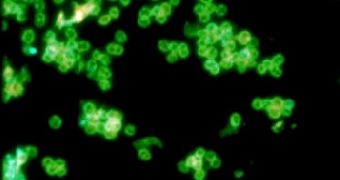Gonorrhea, together with syphilis and HIV, make a "love triangle" of the most famous sexually transmitted diseases. Indeed, gonorrhea, caused by the Neisseria gonorhoeae bacterium, affects 62 million people, aged mainly 15 to 29, are represents world's second most widespread STDs after the infection with Chlamydia trachomatis (930,000 cases of Chlamydial infection and 360,000 of gonorrhea were assessed in the United States in 2004).
But the power of gonorrhea is what really have shocked the scientists (as revealed in a new research published in PLos Biology): relative to its weight, the Neisseria bacterium is the strongest organism on Earth: it can pull up to 100,000 times its body weight (could you drag 7,000 tons?).
Many bacteria move around using up to 10 contractile filaments named pili. The pili can be 10 times longer than the bacterium itself. Neisseria bacteria employ the "type four" pili, but no one has seen before that these bacteria can join the force of their pili for achieving long, strong pulls.
The team led by Michael Sheetz at Columbia University in New York placed Neisseria bacteria in an environment of tiny gel "pillars" and the researchers calculated how many of them were bound by the bacteria for assessing the force of their pull.
Most pulls were short grabs, but in 1% of the pulls, even if with the short grab start, they gradually raised power in jumps of force amount matching the initial pull, as one pilus after another was added to the traction. The final result was a 10 times stronger pull than a simple short grab, and the bacterium was able to maintain it for several hours.
Electron microscopy confirmed the researchers' hunch: the filaments bundled to increase the pull power. The phenomenon had gone unnoticed until now because a protein usually included into the bacterial culture medium blocked the contractile protein from the filaments.
The real power developed by the bacteria was about a nanoNewton (one billionth of a Newton) (the acceleration of 1 kg x m/ second squared). It may not sound impressive, but compare this to the weight of a bacterium, and this means a force 100,000 higher: the relatively strongest biological contraction ever recorded.

 14 DAY TRIAL //
14 DAY TRIAL //